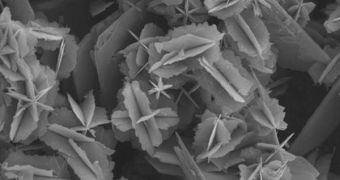Many people currently suffering from conditions of the heart or the circulatory system are prescribed treatments that revolve around the implantation of stents inside their bodies. These devices are placed inside veins, and their job is to gradually release drugs in such a manner that they get absorbed very well by the body. Now, this approach to treating cardiovascular diseases may be coming to an end. A team of researchers in the United States recently managed to produce a new type of nanoparticles that does exactly the same thing, only much more elegantly, and with less complications.
In charge of the new work were scientists from the Harvard Medical School, and the Massachusetts Institute of Technology (MIT). They created nanoparticles called “nanoburrs,” which have the ability to cling on to vein or artery walls, and then gradually release the drugs they are laden with. According to the research team, the particles can remain active over several days. They bind only to specific proteins, as their surface is covered with a certain kind of cellular fragments that bind to these molecules. Details of the new work appear in a study published in the January 18 issue of the respected journal Proceedings of the National Academy of Sciences (PNAS).
The author of the investigation was HMS Associate Professor Omid Farokhzad. He said that the main advantage that these nanoburrs had was the fact that they were designed specifically to home in on the most affected parts of a damaged circulatory vessel. The main target for the nanoparticles is the basement membrane, which is a feature of the circulatory system that only gets exposed when arterial walls are damaged. “This is a very exciting example of nanotechnology and cell targeting in action that I hope will have broad ramifications,” MIT Professor Robert Langer, also a coauthor of the PNAS paper, says.
At this time, the researchers are working on further testing their new nanoparticles on unsuspecting lab rats. Their goal is to determine the correct dose that needs to be administered to a patient, in order for the nanoburrs to have the most powerful effect. The HMS/MIT team believes that its new targeting method could also be adapted to deliver drugs to tumors. “This technology could have broad applications across other important diseases, including cancer and inflammatory diseases where vascular permeability or vascular damage is commonly observed,” Farokhzad believes.

 14 DAY TRIAL //
14 DAY TRIAL //